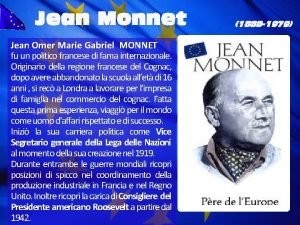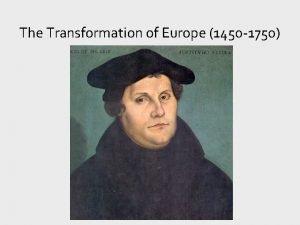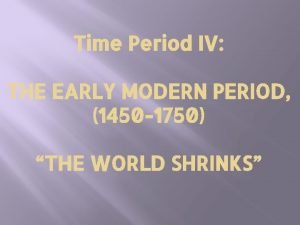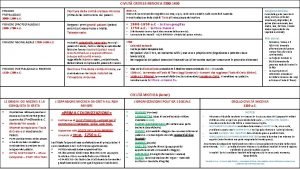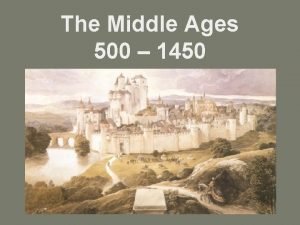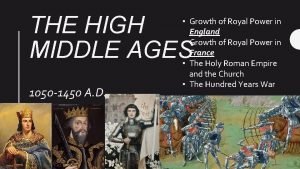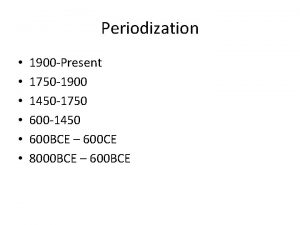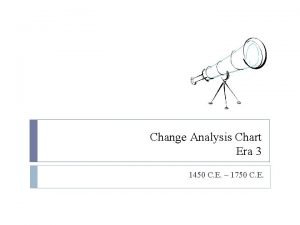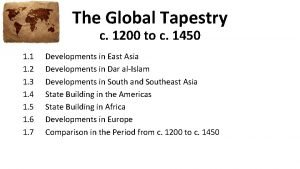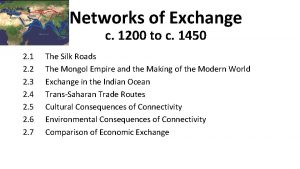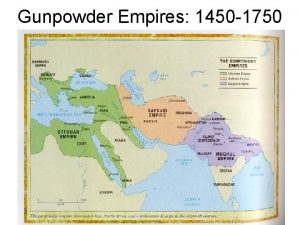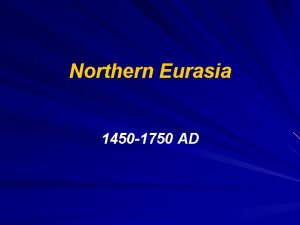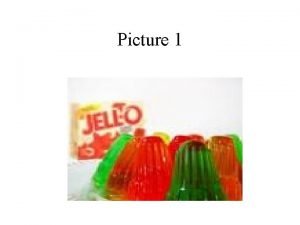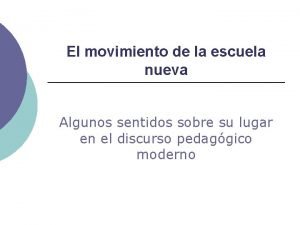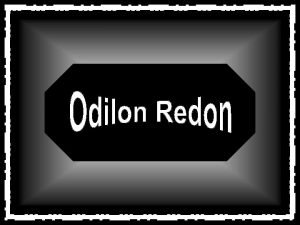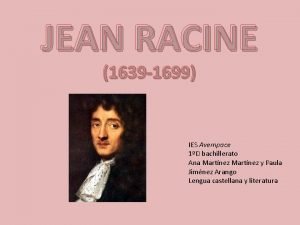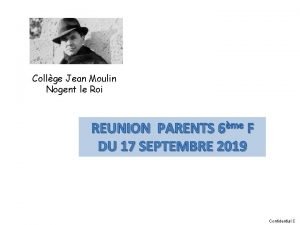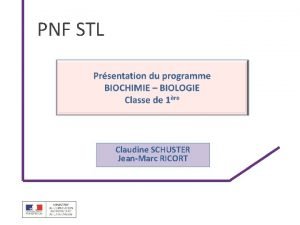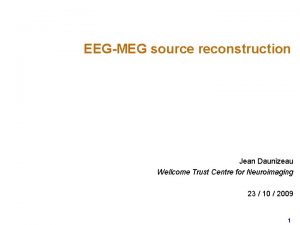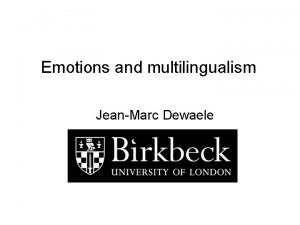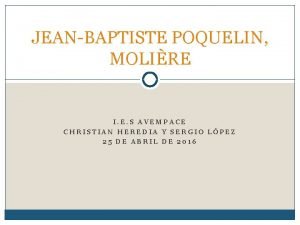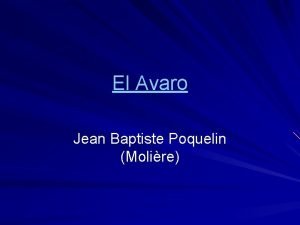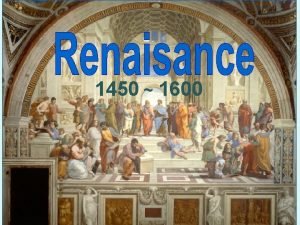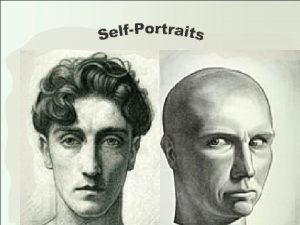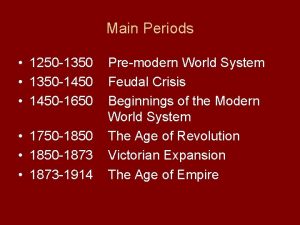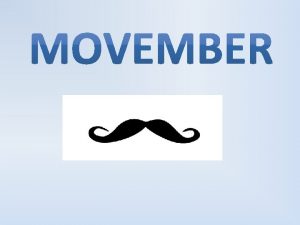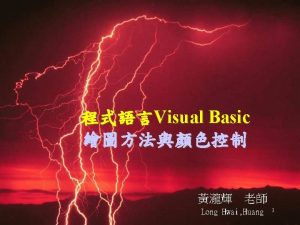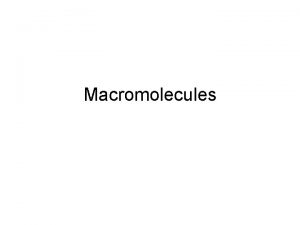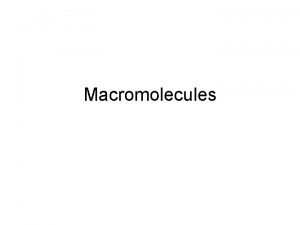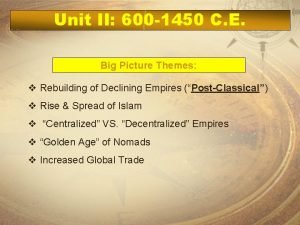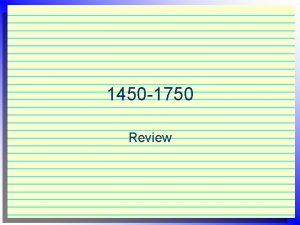Jean Fouquets selfportrait c 1450 a small picture























































- Slides: 55

Jean Fouquet's self-portrait (c. 1450), a small picture created in gold on black enamel, is seen as "the earliest clearly identified self-portrait that is a separate painting, not an incidental part of a larger work. “ However, self-portraits are known to go back as far as the Amarna Period (c. 1365 B. C. ) of Ancient Egypt.

A self-portrait, as a projection of self, may have began with Fouquet's hand held portrait, but artists like Albrecht Dürer are known for the detailed exploration of their own images. They paint themselves as they wish to be seen. Other portrait artists who also used the self-portrait as a projection of self did so to demonstrate wealth, social status, talent or religious beliefs.

While Dürer used the canvas to reflect his physical appearance, later artists such as Rembrandt and Van Gogh took the self-portrait to a deeper level. Rembrandt created vast amounts of self-portraits through intensive self-study. Van Gogh wrote in a letter to his brother, "In Rembrandt's portraits. . . it is more than nature, it is a kind of revelation. " Rembrandt's self-portraits delve deep into the psyche, they show a complex personality, strong emotions, and a chronicle of circumstances through life. One of the greatest examples of self-portrait as self study can be seen in the work of Frida Kahlo. In approximately one-third of her work Kahlo used herself as the main subject, creating a kind of therapy, struggling to make amends with personal afflictions.

Rembrandt. Self Portrait, 1640.

Frida Kahlo




Pablo Picasso





Van Gogh




Henri Matisse



Salvador Dali “Self Portrait with Neck of Raphael”


Paul Gauguin


A strange mix? Experts continue to debate what Gauguin intended with these contradictory symbols. He seems to be dealing in opposites: good and evil, heaven and hell. He places expanses of flat, intense color—red and yellow—next to each other. He frames his floating head with stylized, arching green stems and square flowers. Is this the Garden of Eden. . . or. . . ? Is Gauguin telling us he is part angel, part devil? Perhaps he's showing himself as a sort of magician—an artist with tremendous creative power who can conjure identities through his artistry. Another unusual fact about this work: Gauguin painted it on the wooden door of an in northwestern France. All in all, it is a very startling and thoughtprovoking portrait.


Chuck Close

Marc Chagall. I and the Village, 1911

Andy Warhol

Paul Klee

Henri Rousseau

Rene Magritte

Norman Rockwell

Edvard Munch


All of these artists gazed into their mirrors and attempted to grasp their identities. They sought to portray their image, whether it showed a clear representation of their features, a walk through their childhood or an outpouring of emotions. Some self-portraits show only what the artist wants us to see, some chronicle the history of the artist, others reveal personal secrets and a sense of isolation. Whichever method is employed each artist took a long literal and figurative look at him/herself. Each portrait is a an exploration of the self.



















 Jean monnet jean-gabriel monnet
Jean monnet jean-gabriel monnet Jean monnet jean-gabriel monnet
Jean monnet jean-gabriel monnet Desktop overview
Desktop overview Important events in the renaissance
Important events in the renaissance Fur trade ap world history
Fur trade ap world history 1250 bc
1250 bc Ap world history 600 to 1450 review
Ap world history 600 to 1450 review Mughal empire 1450 to 1750
Mughal empire 1450 to 1750 Religion 1450-1750
Religion 1450-1750 Europe 1450
Europe 1450 World map 1450
World map 1450 1900-1450
1900-1450 Russian empire innovations 1450 to 1750
Russian empire innovations 1450 to 1750 2300-1450
2300-1450 500/1450
500/1450 1450 ad
1450 ad Southeast asia 1450 to 1750
Southeast asia 1450 to 1750 1750-600
1750-600 Change analysis chart 1450 to 1750
Change analysis chart 1450 to 1750 Saq answer example
Saq answer example Europe map 1750
Europe map 1750 Global tapestry definition
Global tapestry definition Splitski nadbiskup 1450
Splitski nadbiskup 1450 Kznu radio
Kznu radio C-1450-2
C-1450-2 Land based empires 1450 to 1750
Land based empires 1450 to 1750 Agean art
Agean art Japan 1450-1750
Japan 1450-1750 Picture 1 picture 2
Picture 1 picture 2 Rectangle real life examples
Rectangle real life examples Jean-luc harousseau
Jean-luc harousseau 10 caritas processes examples
10 caritas processes examples Jean-claude trichet speaker
Jean-claude trichet speaker Rousseau y la escuela nueva
Rousseau y la escuela nueva Jean el cheikh
Jean el cheikh Jean virieux
Jean virieux The crying spider
The crying spider Genetic epistemology definition
Genetic epistemology definition Jean pierre bely
Jean pierre bely Jean mantz
Jean mantz Jean racine biografia
Jean racine biografia Teori model keperawatan leininger
Teori model keperawatan leininger Pronote jean piaget
Pronote jean piaget Jean-marc ricort
Jean-marc ricort Jean daunizeau
Jean daunizeau Lycée jean durand
Lycée jean durand Jean baptiste perrin nobel prize lecture
Jean baptiste perrin nobel prize lecture Jean-marc perreault
Jean-marc perreault Multilingualism meaning
Multilingualism meaning Jean baptiste poquelin biografia
Jean baptiste poquelin biografia Jean pouaha
Jean pouaha Daniel piette lvmh
Daniel piette lvmh Patrick simon saint jean de luz
Patrick simon saint jean de luz Obras de jean baptiste poquelin
Obras de jean baptiste poquelin Ood uml
Ood uml Jean-daniel collomb
Jean-daniel collomb

